Guillermo del Toro’s Pinocchio Review - del Toro Brings the Humor, Heart, and Horror in the Best Pinocchio Adaptation to Date
Whether you saw the 1940 animated film from Disney, Pinocchio, the 1996 live-action film The Adventures of Pinocchio, the 2019 film, also titled Pinocchio, directed and co-produced by Matteo Garrone, Pinocchio: A True Story's English dub with Pauly Shore playing the titular wooden boy, or the live-action remake of the 1940 film directed and co-written by Robert Zemeckis that released earlier this year, chances are you have a passing familiarity with the story of Pinocchio.
However, what if I told you that the films I listed above are less of an adaptation than a rework of the story these films are supposedly based on?
For those unfamiliar with the original story, The Adventures of Pinocchio, written by Carlo Collodi and illustrated by Enrico Mazzanti, was published in February 1883. Much of what you know about the story of Pinocchio is intact, but Gepetto never wishes for Pinocchio to come to life in the original story. Furthermore, Pinocchio kills Jiminy Cricket by accident; Geppetto is imprisoned for possibly mistreating Pinocchio; the fox and the cat have nothing to do with a carnival; Pinocchio dies only to be resurrected by the fairy (who later dies and is later resurrected as Pinocchio's mother) we now from the 1940 movie and subsequent adaptations; Pinocchio goes to prison, and Pinocchio fully transforms into a donkey in Toyland, among many other crazy storylines.
I mention this because Guillermo del Toro's Pinocchio is much more of an adaptation of the source material than the story we're used to seeing onscreen. As a result, it's an inherently dark story fraught with the horrors one would associate with a wooden puppet inexplicably coming to life, the humor that Pinocchio's chronic misunderstandings of the world around him brings up, and the heart of the bond between a father and son.
Part of why Guillermo del Toro's Pinocchio works so well is the two-handed direction by del Toro and Mark Gustafson.
The former director brings his trademark horrific twist on the fairy tale, asking the viewer to place themselves in the world of Italy and to think logically about how they would react to a talking wooden puppet. Also, being a co-writer on the screenplay, del Toro firmly paces the film by setting up the town Gepetto lives in with tons of backstory not even explored in the novel the film is based upon, as well as Gepetto himself, before even introducing the titular character.
The latter director brings his expertise in animation to find ways to bring del Toro's vision into reality. One of the ways this manifests itself is in how the characters move around each scene. I'll save the animation talk for a bit later. But I appreciate how smooth the movement is here, as most stop-motion animation can look at what I can only describe as "jerky" when characters walk for extended periods.
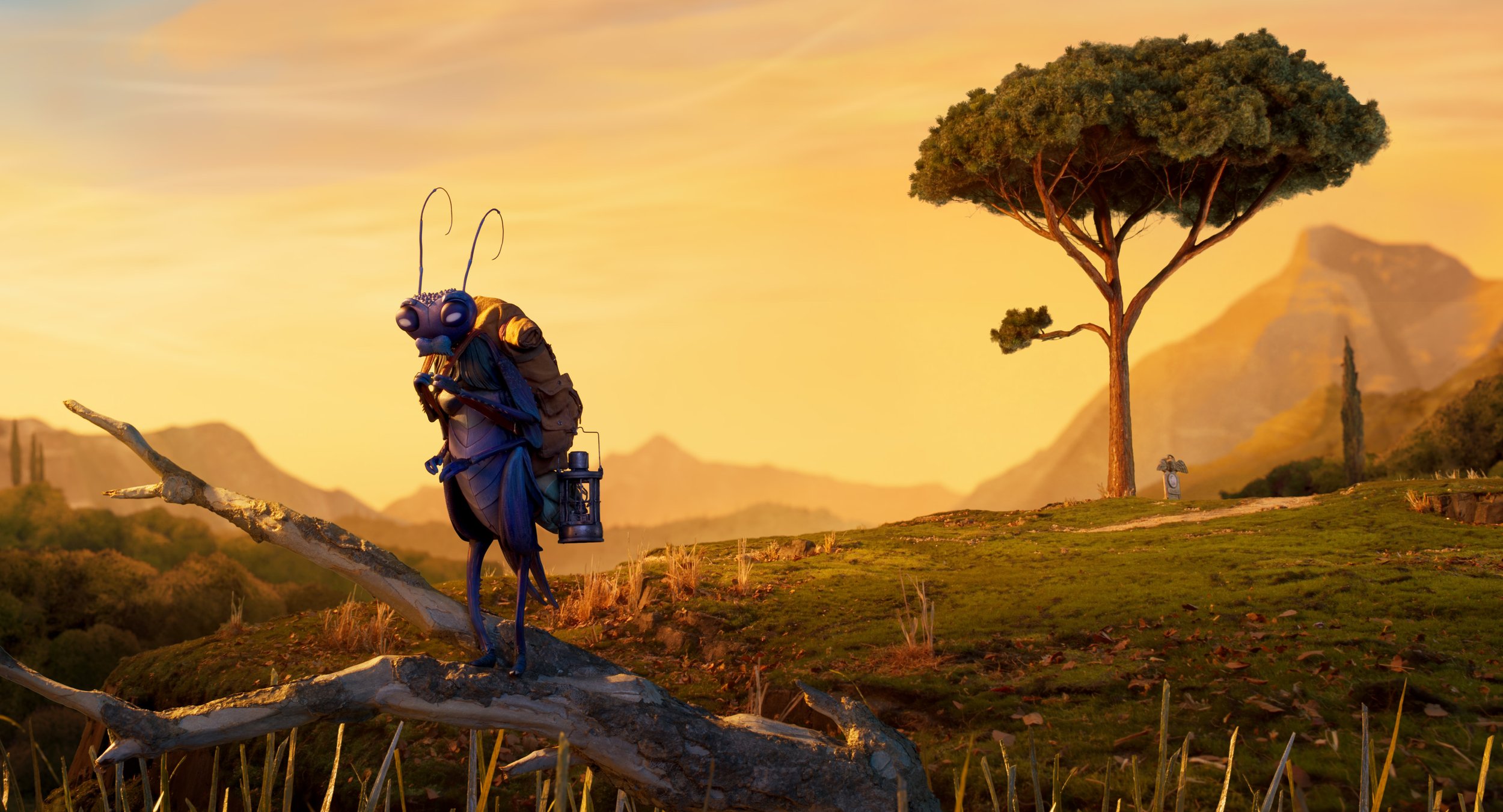
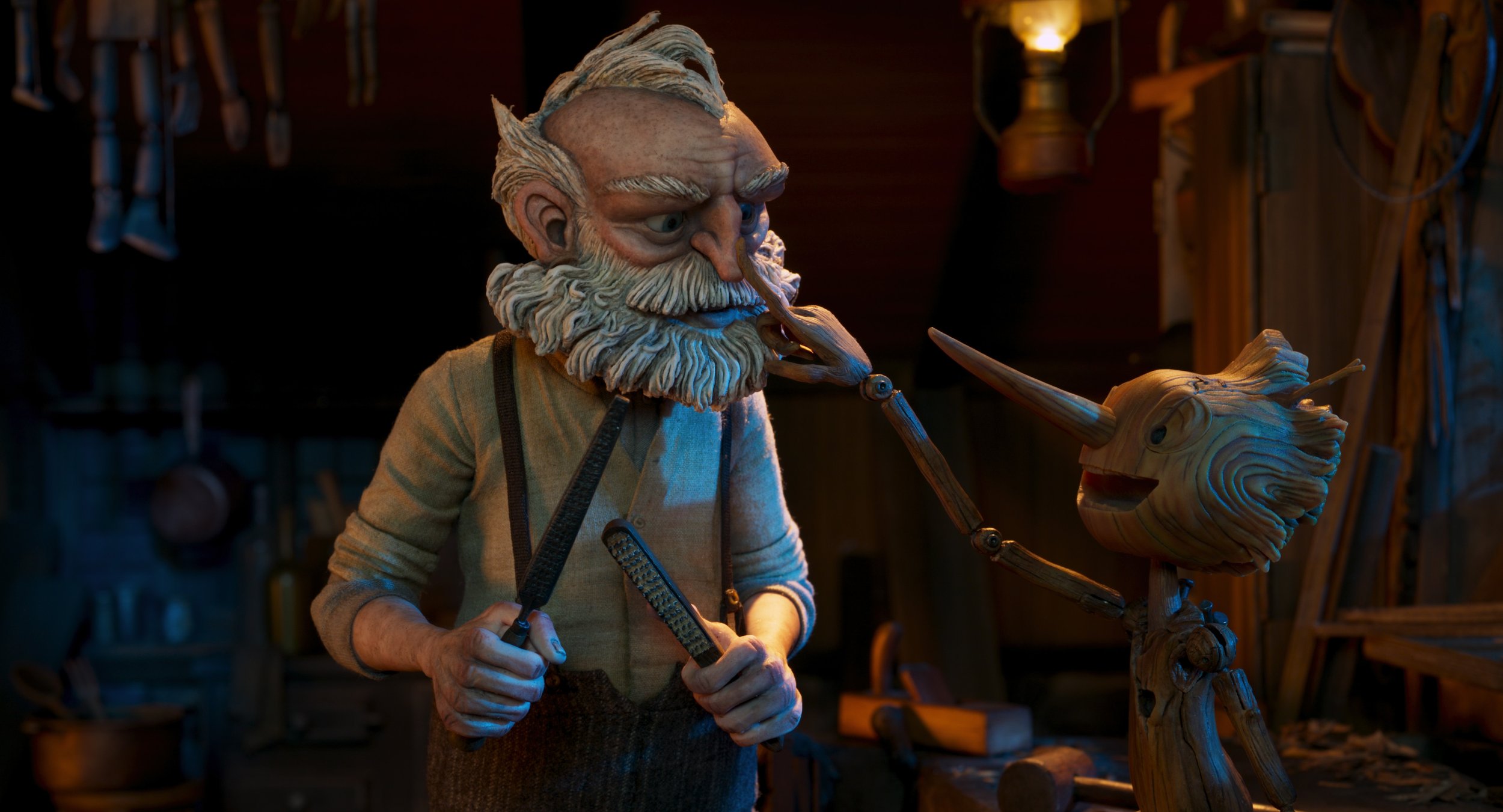
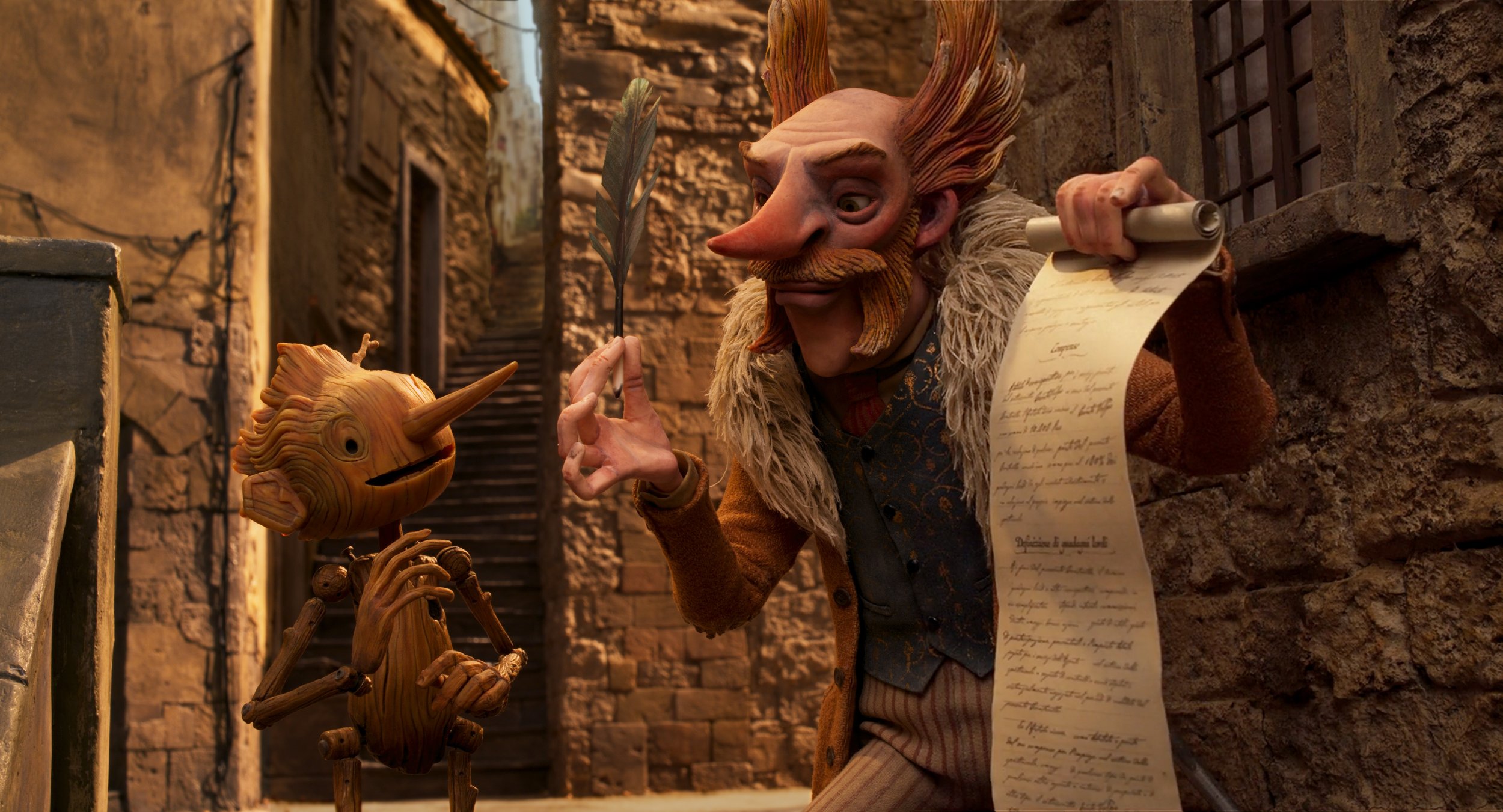
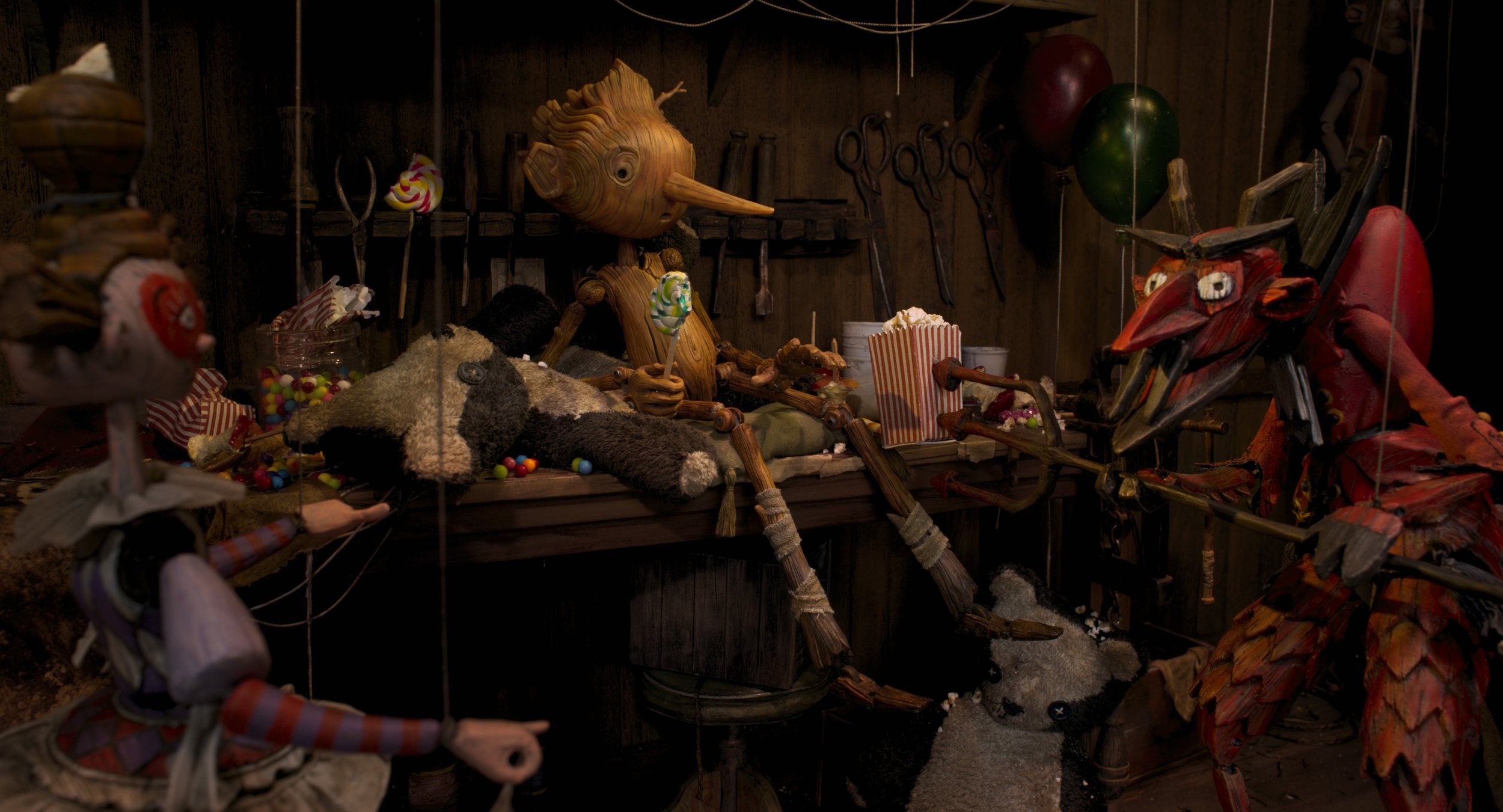
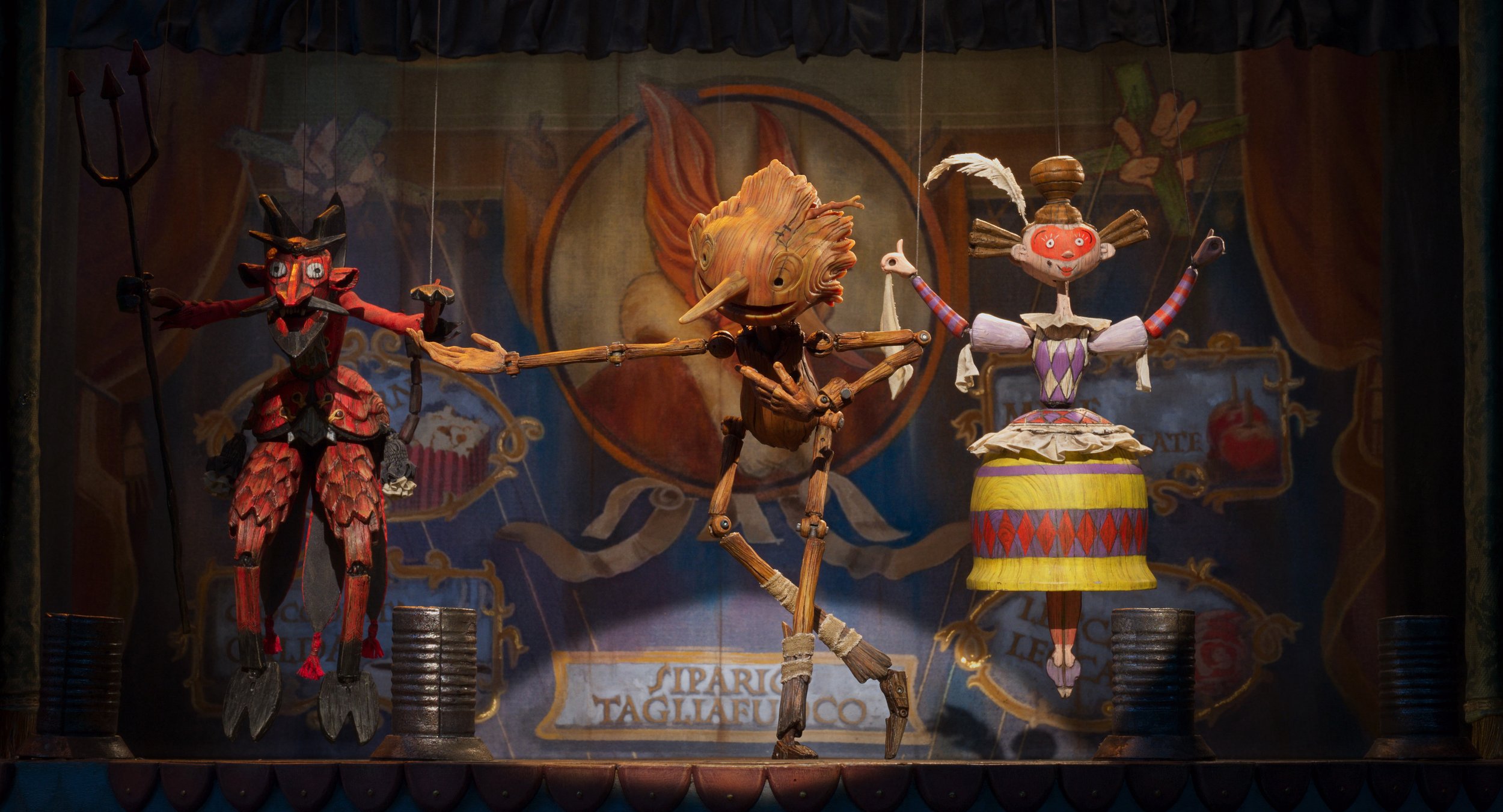
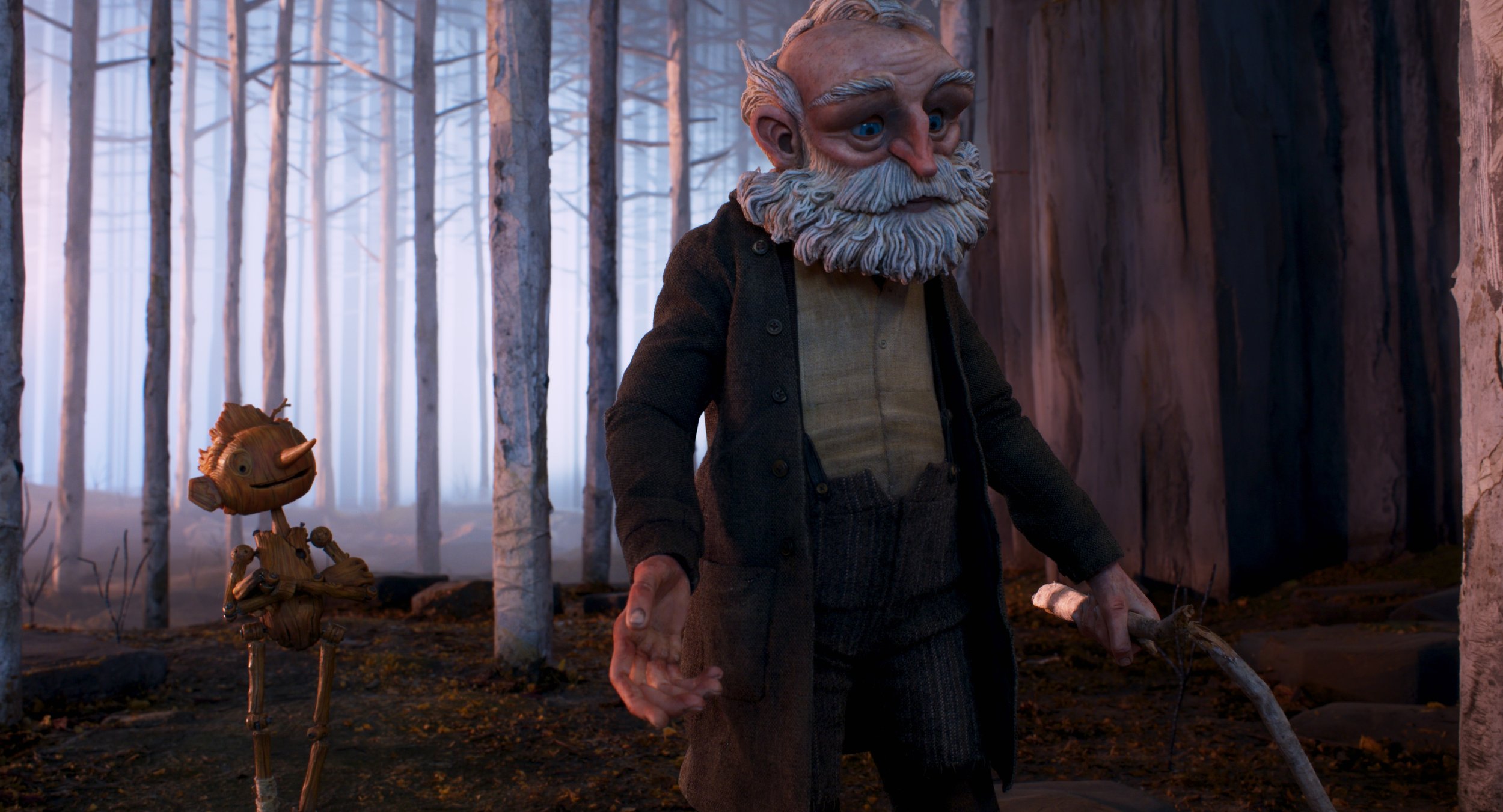
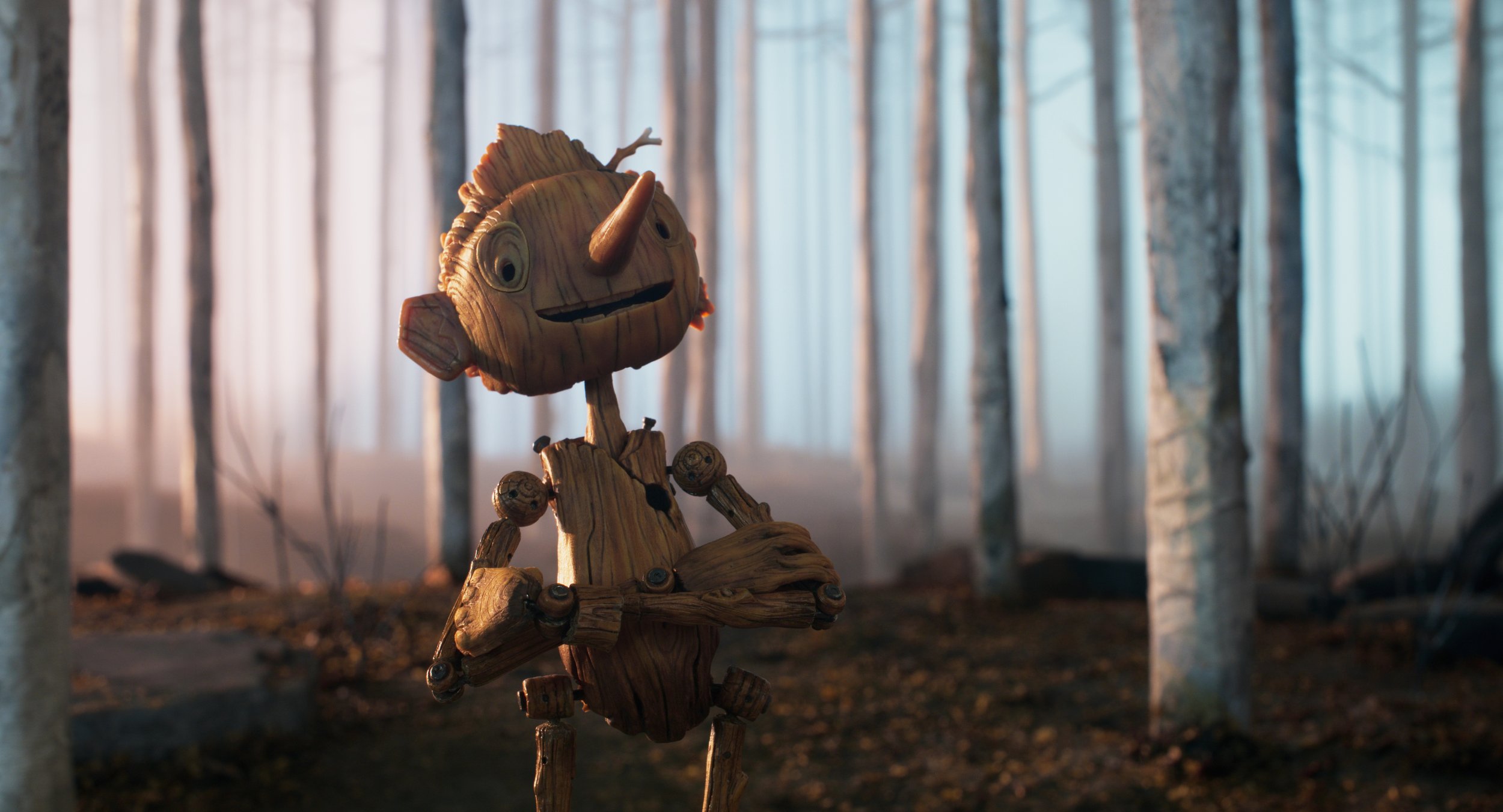
While we're on the topic of characters, I want to shout out to Mary Hildago's casting job. Yes, there are frequent del Toro collaborators on the cast, like Ron Perlman as Podestà, Burn Gorman as Priest, Cate Blanchett as Spazzatura, and Tim Blake Nelson as Black Rabbits. However, his repertoire has new faces like Gregory Mann as Pinocchio, David Bradley as Gepetto, Ewan McGregor as Sebastian J. Cricket, Christoph Waltz as Count Volpe, Tilda Swinton as the Wood Sprite, Finn Wolfhard as Candlewick, and John Turturro as Doctore.
Each and every member of this fantastic ensemble cast of characters is astounding. However, if I were to pick favorites, I would have to pick Mann, Bradley, and Wolfhard for both their outstanding vocal performances and the nuances they bring to these classic characters.
Bradley's Gepetto is a tender take on the character, perhaps even more so than in the 1940 film. del Toro and Bradley force you to contend with how broken Gepetto is as a human being and is the emotional anchor for much of the film. There were moments when I was tearing up due to Bradley's performance and how much of his life was improved by Pinocchio's presence.
On the opposite end, Mann's performance is the perfect representation of Pinocchio's innocence, playfulness, and the factor of literally being born yesterday that endeared me to the concept of exploring the Pinocchio story for the 20th time.
Wolfhard also helps to rejuvenate the story of Candlewick, who is Podestà's son in this story. His portrayal of Candlewick is this meek little boy. While I'm not at liberty to spoil anything, he might have one of my sections of the movie besides everything with Gepetto that somehow made me empathize with the son of a person that is so evil that it makes your skin crawl.
Something that doesn't make my skin crawl is Alexandre Desplat's soundtrack. Utilizing woodwind, wooden percussions, strings, piano, harp, mandolin, guitar, and also an accordion made of wood, his score feels different from track to track, with songs like "Going to Town" being this bright & peppy track mixed in with a bit of intrigue and other songs like "Gepetto's Creature" selling the horrific elements of what Gepetto has created.
It's also Desplat's first attempt at composing original songs. Thankfully, he has help from Patrick McHale, but his compositions feel as effortless as his score. From the lullaby "My Son" to the sorrowful solo "Ciao Papa," he never misses. This shouldn't be surprising to anyone who's listened to any of his previous work, but it's still surprising that he's able to craft instant classics so easily on his first project.
While we're talking about classics, it's a good time as ever to talk about Frank Passingham's cinematography. You might know his name from his work on the DreamWorks Animation films Chicken Run and Flushed Away or LAIKA's Kubo and the Two Strings. For Guillermo del Toro's Pinocchio, Passingham has brought his invaluable expertise to the table by utilizing LED lighting to help maintain the viewer's sense of immersion and to make the world and the characters within it feel as natural as possible. I'd say he passes with flying colors, especially in a scene taking place in a forest.
Something else that passes with flying colors is the animation by the massive team of 40 animators and countless effects teams & artists. I don't know how the teams pulled it off, but somehow they have managed to make the characters move in a way that feels natural but still patently stop-motion animation. At points, I made a note while watching where I was almost convinced that the effects teams were correcting some of the "jerky" movements and imperfections audiences associate with the medium.
All of this adds up to my favorite and possibly the best adaptation of the Pinocchio tale. I'll be shocked if del Toro and his team don't walk away with at least Best Animated Feature Oscar.
★★★★★
Guillermo del Toro’s Pinocchio is now available to stream with a Netflix subscription.
Until next time!
Thanks to Thomas Stoneham-Judge from Movies For Reel, Shane Conto, Joseph Davis, David Walters, Ambula Bula, Matthew Simpson, Thom Blackburn, and Beatrice AKA Shakesqueer, for supporting Austin B Media on Patreon!


